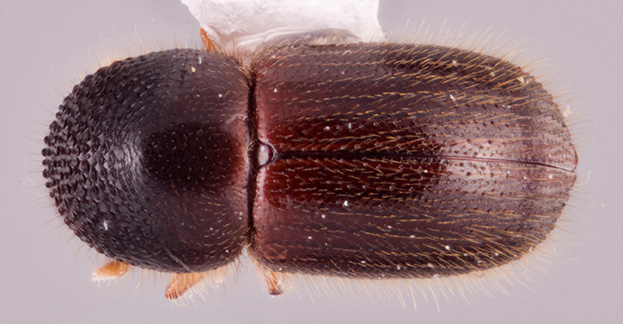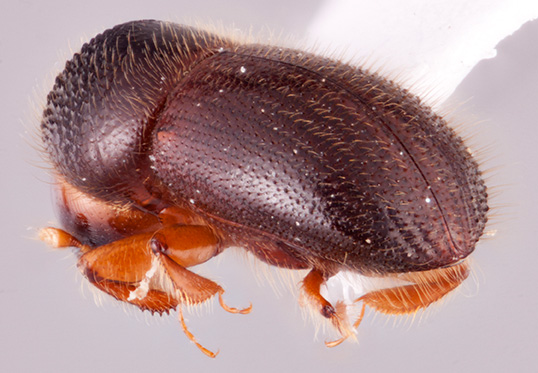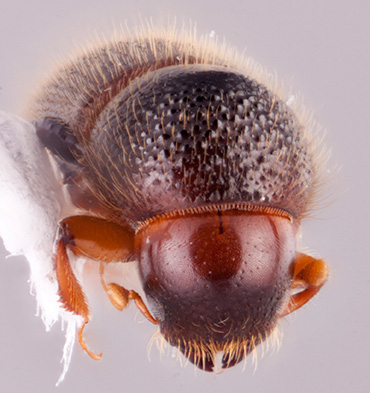Xylosandrus formosae
|
Xylosandrus formosae lateral; R.K. Osborn |
|
Xylosandrus formosae dorsal; R.K. Osborn |
|
Xylosandrus formosae declivity; R.K. Osborn |
|
Xylosandrus formosae frontal; R.K. Osborn |
Taxonomic history
Xyleborus formosae Wood, 1992: 80 (new name for X. formosanus Browne nec Eggers 1930Eggers 1930:
Eggers H. 1930. Neue Xyleborus -Arten (Col. Scolytidae) aus Indien. Indian Forest Records, Entomology Series 14: 177-208.).
Xyleborus formosanus Browne, 1981a: 131 nec Eggers 1930: 186.
Cyclorhipidion formosanum (Browne): Beaver and Liu 2010: 24.
Xylosandrus formosae (Wood): Smith et al. 2020b: 400.
Diagnosis
2.5−3.0 mm long (mean = 2.76 mm; n = 5); 2.27−2.55 times as long as wide. This species can be distinguished by the narrowly separated procoxae; pronotalpronotal:
'pertaining to the pronotum
mycangial tuftmycangial tuft:
'tuft of setae that denotes the mycangia exterior opening
 absent; abundant hair-like elytralelytral:
absent; abundant hair-like elytralelytral:
'pertaining to the elytra
vestiture; declivitaldeclivital:
pertaining to the elytral declivity
striae and interstriaeinterstria:
'longitudinal spaces along the elytra between the striae, which is not as<br />
impressed and bear smaller punctures.
 uniseriate punctatepunctate:
uniseriate punctatepunctate:
'set with fine impressed points, appearing as pin pricks
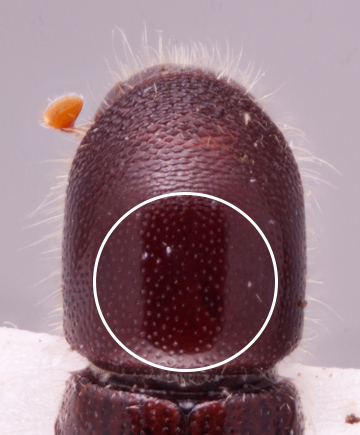 ; and declivitydeclivity:
; and declivitydeclivity:
downward slope of either the pronotum or elytra
 rounded, convexconvex:
rounded, convexconvex:
appearing rounded , unarmed, surface shagreenedshagreened:
, unarmed, surface shagreenedshagreened:
covered with a closely-set roughness, like shark skin'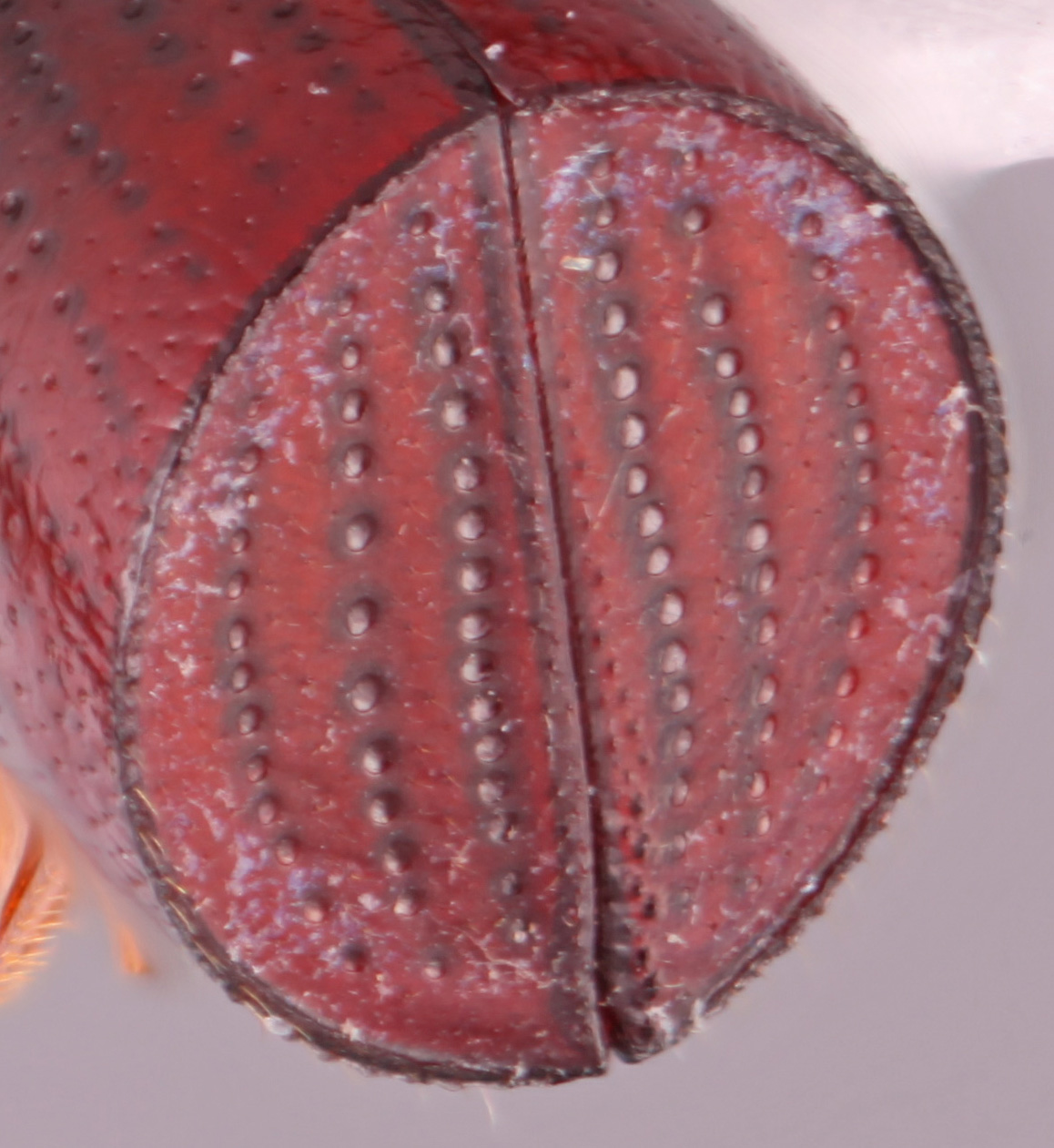 , appearing dull.
, appearing dull.
May be confused with
Anisandrus lineatus, Coptodryas inornata, Cyclorhipidion spp., Euwallacea fornicatus, E. kuroshio, and E. perbrevis
Distribution
China (Fujian, Jiangxi, Xizang), India (West Bengal), Laos, Taiwan, Thailand, Vietnam
Host plants
polyphagous; recorded from Amoora (Meliaceae), Machilus (Euphorbiaceae), Michelia (Magnoliaceae), and Saurauia (Actinidiaceae) (Smith et al. 2020bSmith et al. 2020b:
Smith SM, Beaver RA, and Cognato AI. 2020b. A monograph of the Xyleborini (Coleoptera, Curculionidae, Scolytinae) of the Indochinese Peninsula (except Malaysia) and China. ZooKeys 983: 1-442. https://doi.org/10.3897/zookeys.983.52630)
Remarks
The unusual morphology of this species is superficially similar to that of several other genera (see similar species above). This presents a challenge in the generic identification of specimens, especially if they are not pinned. Molecular phylogenetics revealed this species belongs in Xylosandrus and represents the only known species of an Australian species group comprised of X. monteithi Dole and Beaver, 2008, X. rotundicollis (Browne, 1984b), and X. woodi Dole and Beaver, 2008 in SE Asia (Cognato et al. review).
DNA data
Sequences available for COI and CAD.


